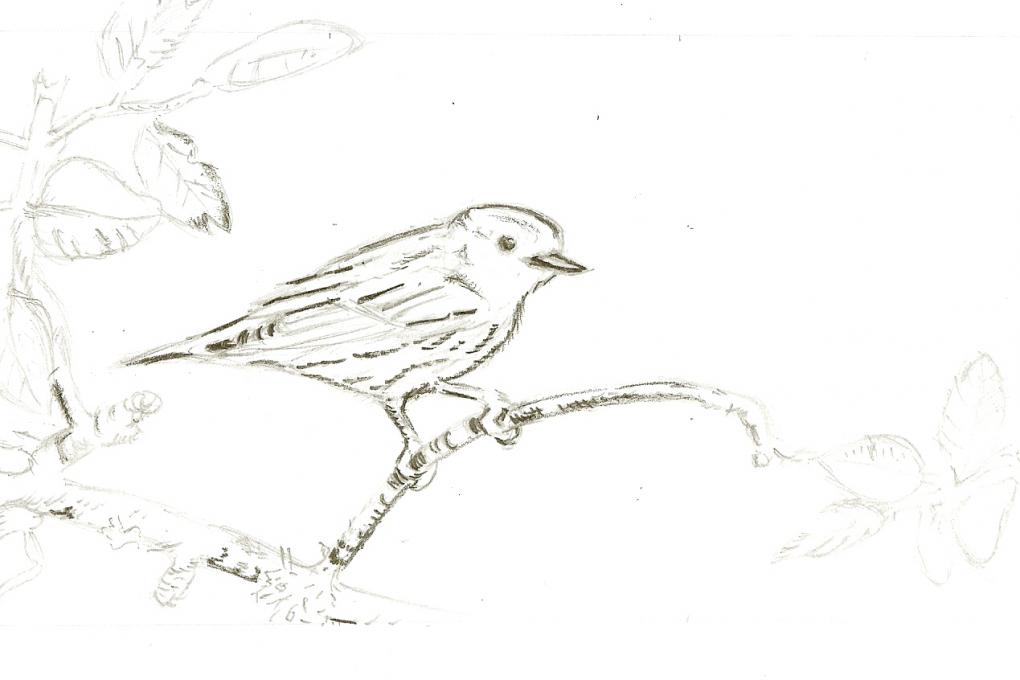The Cornell Lab Bird Academy › Discussion Groups › Nature Journaling and Field Sketching › Jump Right in!
-
I enjoyed drawing from the photo. What came easily was my understanding of the posture of the bird and the relationship of the eye to the beak. I am having difficulty getting the layers of wing and tail feathers as well as how to draw the legs and feet properly. If I took more time I wold have worked on the branch and the lichen of the branch, as well as, the leaves to show where the bird was perched.
-
 Hello all,
the warbler was a very nice starter project. I enjoyed studying the colorful feathers and their different yellow tones. This drawing was done by color pencil on watercolor paper. In future I want to use watercolor as my previous colors.
I love all the different warblers here in this community. It is always great to be surounded by other nature-addicted artists. Looking forward to more!
Hello all,
the warbler was a very nice starter project. I enjoyed studying the colorful feathers and their different yellow tones. This drawing was done by color pencil on watercolor paper. In future I want to use watercolor as my previous colors.
I love all the different warblers here in this community. It is always great to be surounded by other nature-addicted artists. Looking forward to more! -
1. I had fun with it - I tried to do it relatively quickly and not to get overly caught up in the details. I find wings to be difficult - appropriately preserving white space. The eye and bill came pretty easily. 2. I was surprised with the shading on the head - unsure if this is just the color of the photo or feathers. Also it made me notice some of the color patterns in the wings which I would not have noticed otherwise.

-
Accidental reply :)
-
I really enjoyed sketching from a still photo! I started with the branch and lichen because I have practiced drawing those subjects before and then worked on the bird from the feet up. I was a little intimidated by the bird. I struggled with the beak of all things! I'm also working on learning to capture light and shadow. But, in the end, taking the time to slowly sketch from the photo I found little patterns in the wings which I chose to shade in darker to draw the eye to that particular part of the drawing. That wound up being my favourite part of the sketch.


-
i love scrolling through and seeing everyone's warbler!

-
Putting that first mark on the paper was challenging. I started with a couple basic egg shapes for the body and head then worked from there. The hardest part was the eye and the beak and making it look like a real bird. I would not have appreciated the shadowing and nuances of color if I were not asked to draw it.

-
1. I felt pretty nervous about drawing from a photo! The hardest part was starting. Once I had started I found getting the proportions challenging. It was also tricky to work out how I would draw the feathers - so much detail. It was easier once I agreed with myself that mistakes were okay and I wasn't trying to recreate the photo in all it's detailed glory.
 2. I hadn't appreciated the diversity in feathering until I focussed on the photo to draw it. I hope with journalling and this course I will learn to focus and see/appreciate things in a new way.
2. I hadn't appreciated the diversity in feathering until I focussed on the photo to draw it. I hope with journalling and this course I will learn to focus and see/appreciate things in a new way. -
Drawing from a photo means that I had more time to notice details that I might not have noticed on a moving subject. Getting the proper proportions correct was a bit challenging. Also, using a pencil, shading to indicate both color and shadows was difficult.

-
Drawing animals isn't something I do often so I felt a tad bit apprehensive. Jumping in and getting started was easier than trying to copy something from an image. I would not have noticed the details of the branches and which way they were growing and that some were broken off. Noticing the bird details was not as critical since I'm a birder. Yes, noticing branches and things that aren't specifically the topic of interest makes the images look more interesting.

-
I found it somewhat easy to copy this, my first attempt, though it was very small and I felt quite stiff. I say relatively easy since with a photo your subject is static which gives you time to start, stop, erase, start over. I was pleased with my first attempt and I am encouraged to plow ahead. In the photo, I think the shading is more noticeable than through observation, and the lichen might have been missed. However, i don;t think those details this would would be my main focus but overall observations.

-
I feel like it was much easier to draw from the photo than trying to draw a bird in nature (which may fly away any moment). There was more time to look at it closely and make more detailed observations (in addition to looking at it really closely). I'm excited to learn how to draw more accurately (and be able to add more details) and how to use watercolors in the field!

-
It was a challenge to work in the Yellow Warbler because it usually takes me a lot of time to paint a bird. This time I tried to work fast, and to make a detailed sketch, I haven't received my journal yet, but I am very excited to work in my classes.

-
Beautiful detail Victoria!
-
-

-
The anatomy of the feathers was hard for me to draw. I also have a problem with beaks. They are ether too small or too big. Drawing birds from photo is a good exercise for me to draw birds from nature later.
-
-

-
1. I enjoyed drawing from the photo, since I could focus on details without having to rely on my memory or worrying about the bird flying off. The easiest was approximating the general shape of the warbler. The more challenging aspects were reproducing the relative orientations of the different parts of the anatomy: head angle, leg placement, layering of wing feathers, and eye size direction of gaze. My color and color distribution was off as well. 2. There were so many details I would have missed, if I had not attempted to draw the warbler, not that I was able to reproduce them in my drawing. I do think that including sketches in my nature journals would improve them a lot.
-
I like drawing from a photo because it gives me time to study the object I want to draw and notice details that would not be apparent in the brief time you get to study a moving object like a bird. It was easy to get the overall scene but getting proper proportions was challenging. Drawing the yellow warbler made me realize that even the legs and feet of the bird are yellow. I would have missed that just looking at a photo. Whe
 n nature journaling I want to train my eye to notice what is actually there, instead of what I assume might be there.
n nature journaling I want to train my eye to notice what is actually there, instead of what I assume might be there. -
Yellow warbler was fun to draw. Looking at the photo gave me time to know the bird and take my time looking into its shape, color and some details. It was easy to depict the main shapes of the bird. The challenging part was showing balance. Drawing from photo made me notice the bird nostrils on beak which I didn't identify from the photo at first glance. Also, the wings, tail relationship. This drawing helps to master some simple techniques that will make drawing the real bird on site a bit easier. Hopefully ! I did start working in my journal. Below are the pages about the Yellow warbler :)



-
Drawing from the photo allowed me to look and reexamine the bird over and over again. Each time I looked at it I noticed something new...like the feather details and tiny talons. Drawing the shape came easier than the details. My drawing seems flat and more of a caricature than a real bird. I think nature journaling will require faster reflexes on my part and perhaps making note of details the first time rather than taking my time as I did with the photo.
-
This was very hard but I loved the exercise. I would not have noticed much of the detail and shading had I not tried to draw it. The shading was especially difficult. I look forward to stretching my skills more!

-
Color shading was the hardest. I wouldn't have noticed it's little feet/claws and how close it's eye is to its beak. I also don't think i realized that birds eyes don't have pupils?
-
I feel like my drawing looked a bit generic. I noticed the many yellow colors in the bird when I drew it as well as noticing the body shape more.
-
This was my first time using the portable water brushes and I feel like I went a little too wet at times. I found that getting the details like the stripes on the belly and shading of the wings was hard with watercolor, but I'm glad I tried it. I certainly wouldn't have noticed how the claws grab around the branch but loosely in some parts and the shape of the beak. I tried so many times to make the beak look just right!
-
 I really enjoyed the entire process because it made me pay close attention to the moss, the shape of the head, the beak. The feet and expression of the bird came easily, whereas the sticks, feathers, and leaves were more challenging--probably because they required some very minute details, and I was more interested in the birds head and feet. All of this would be so useful with field journaling because it is what I pay attention to when it comes to nature--the utility of the claws around the branch, the form of the beak for pecking, etc.
I really enjoyed the entire process because it made me pay close attention to the moss, the shape of the head, the beak. The feet and expression of the bird came easily, whereas the sticks, feathers, and leaves were more challenging--probably because they required some very minute details, and I was more interested in the birds head and feet. All of this would be so useful with field journaling because it is what I pay attention to when it comes to nature--the utility of the claws around the branch, the form of the beak for pecking, etc. -

Read More:
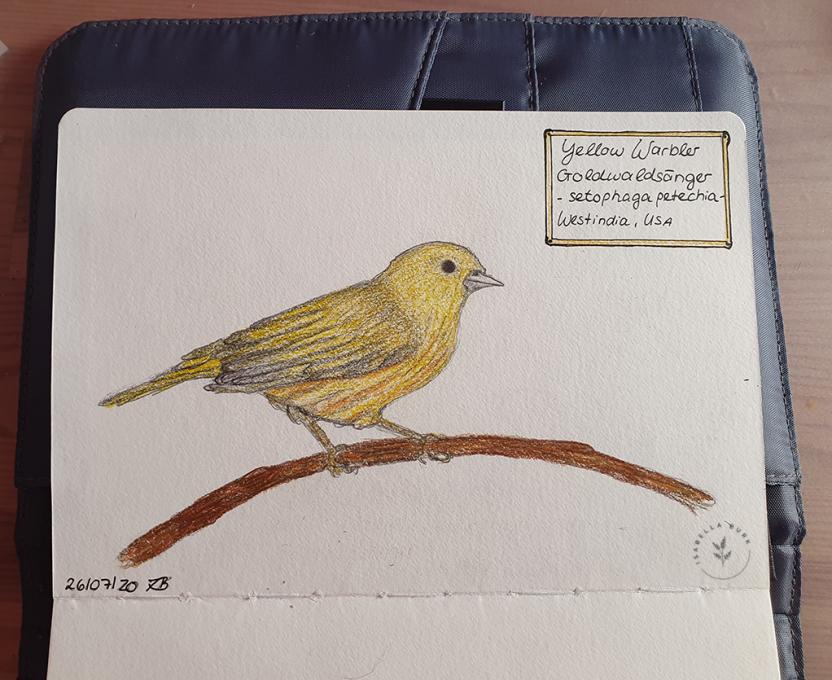 Hello all,
the warbler was a very nice starter project. I enjoyed studying the colorful feathers and their different yellow tones. This drawing was done by color pencil on watercolor paper. In future I want to use watercolor as my previous colors.
I love all the different warblers here in this community. It is always great to be surounded by other nature-addicted artists. Looking forward to more!
Hello all,
the warbler was a very nice starter project. I enjoyed studying the colorful feathers and their different yellow tones. This drawing was done by color pencil on watercolor paper. In future I want to use watercolor as my previous colors.
I love all the different warblers here in this community. It is always great to be surounded by other nature-addicted artists. Looking forward to more! 
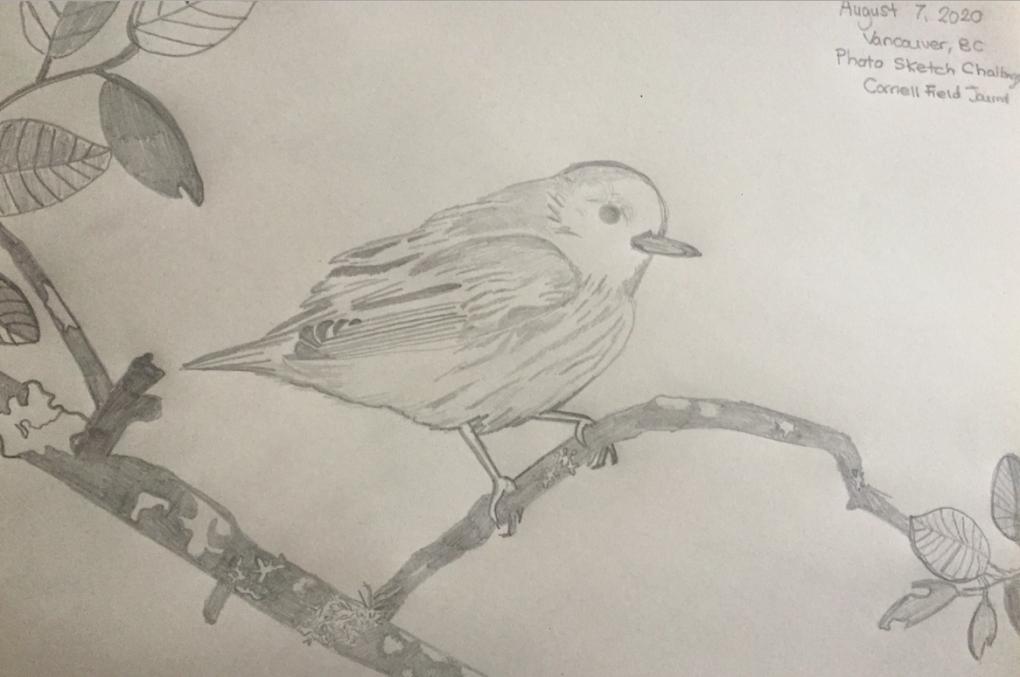
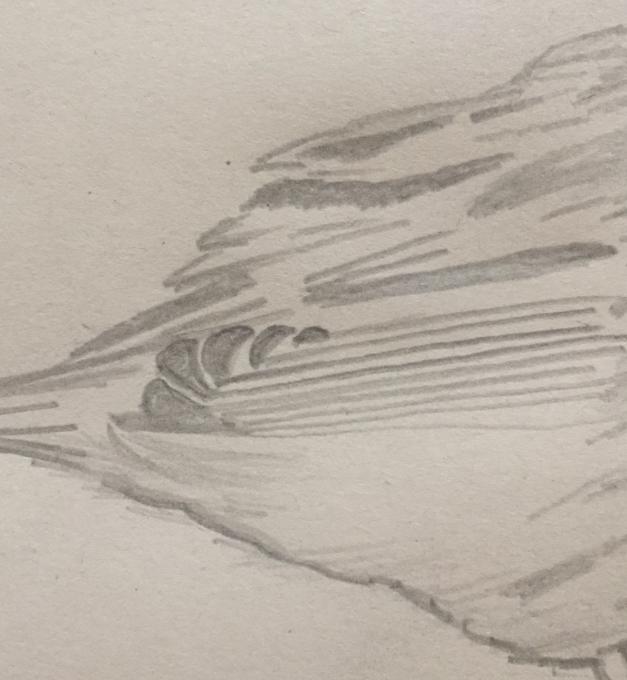
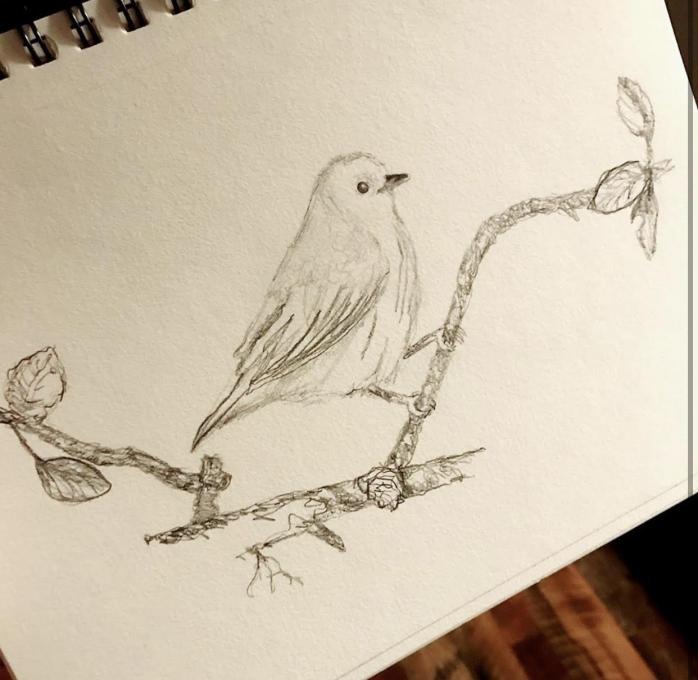

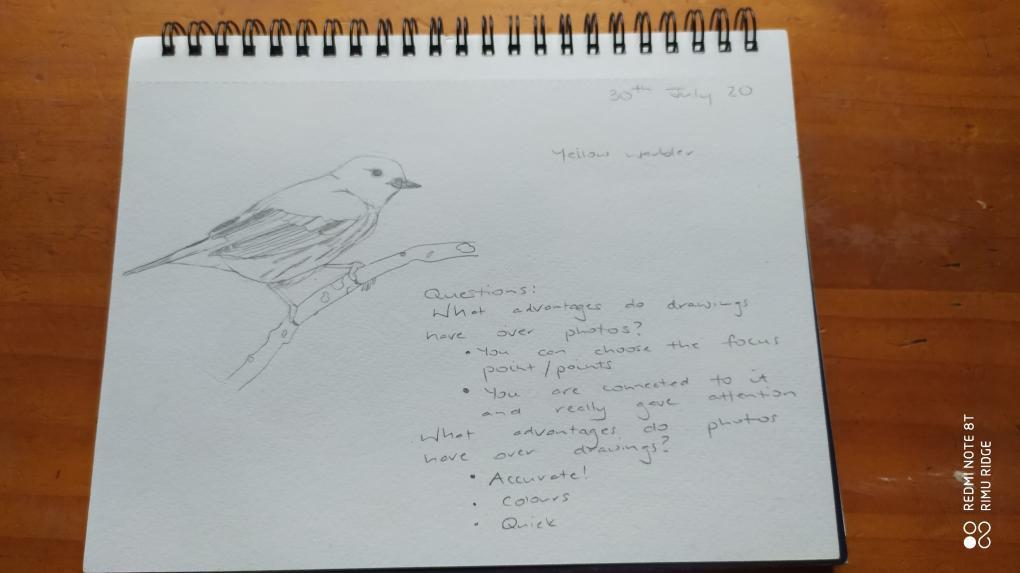 2. I hadn't appreciated the diversity in feathering until I focussed on the photo to draw it. I hope with journalling and this course I will learn to focus and see/appreciate things in a new way.
2. I hadn't appreciated the diversity in feathering until I focussed on the photo to draw it. I hope with journalling and this course I will learn to focus and see/appreciate things in a new way. 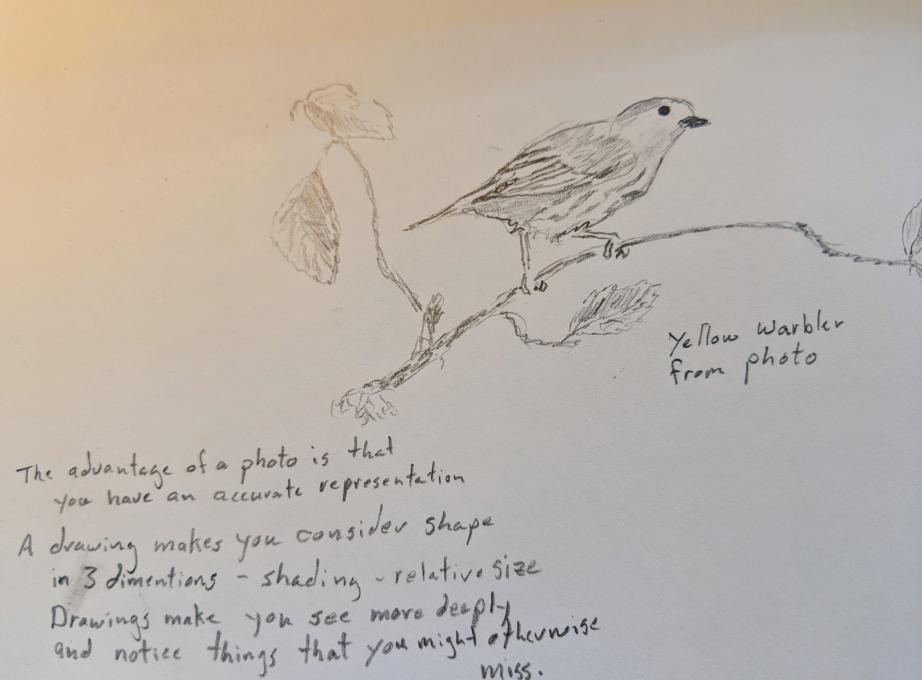
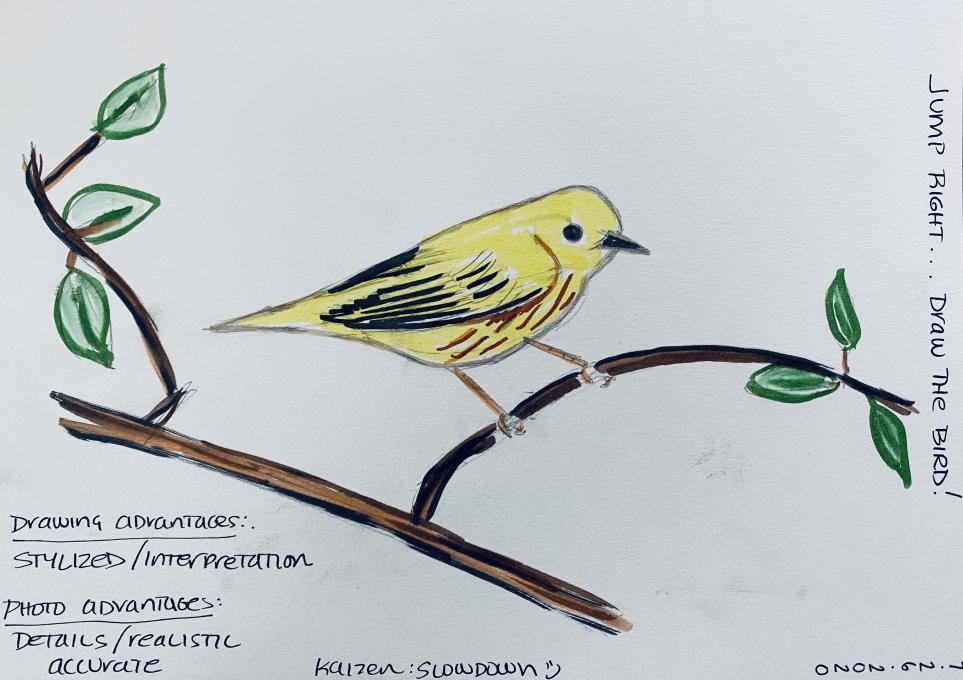
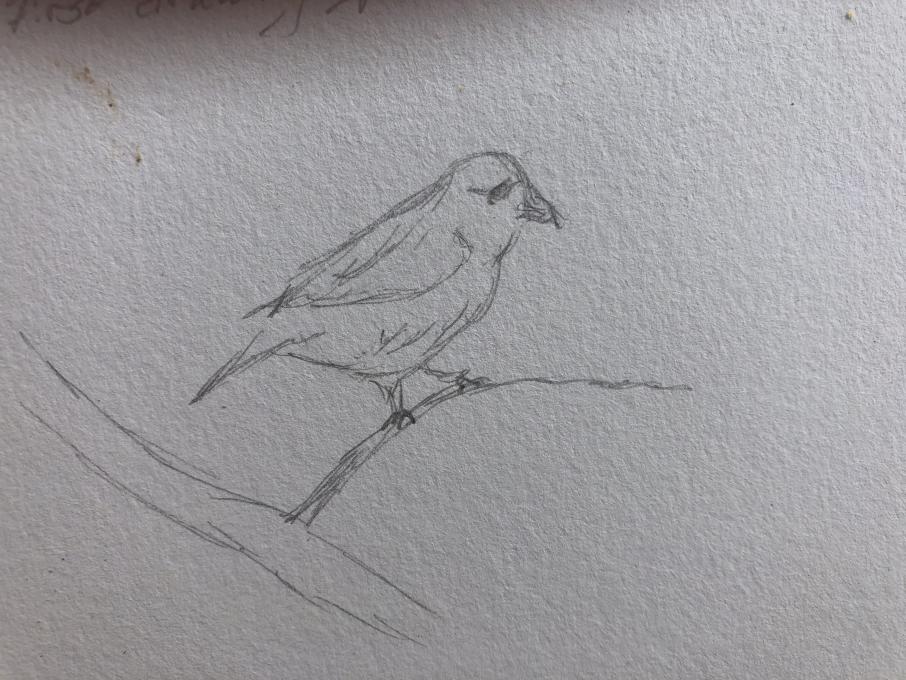
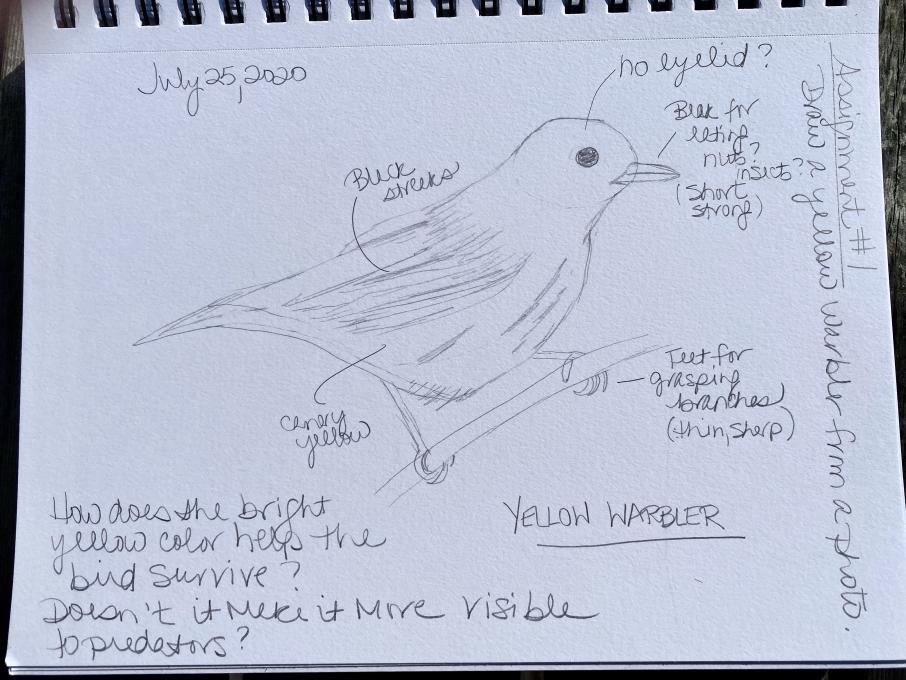
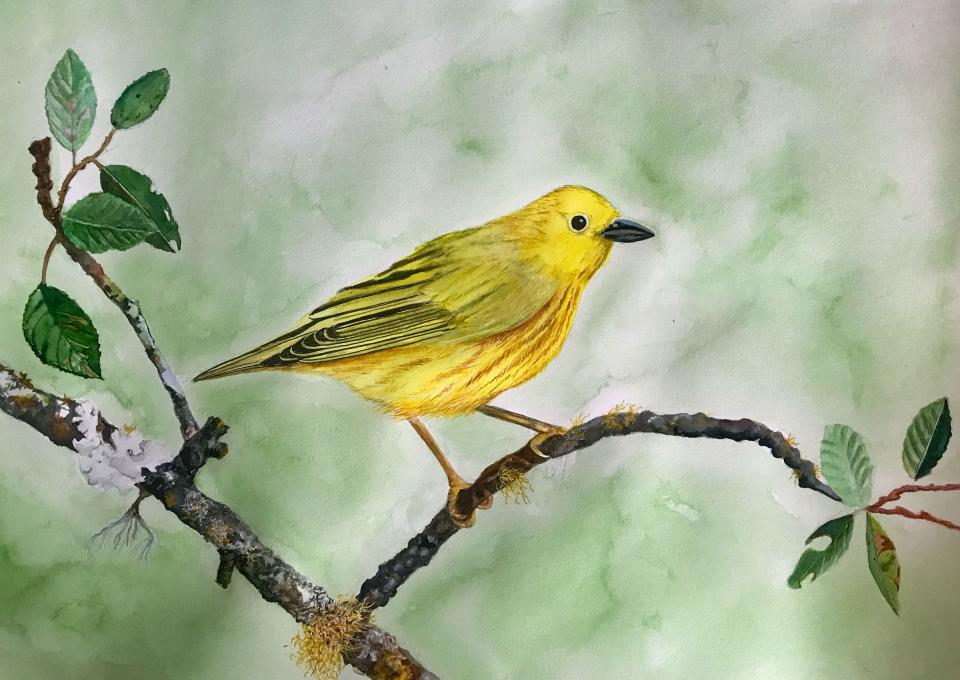

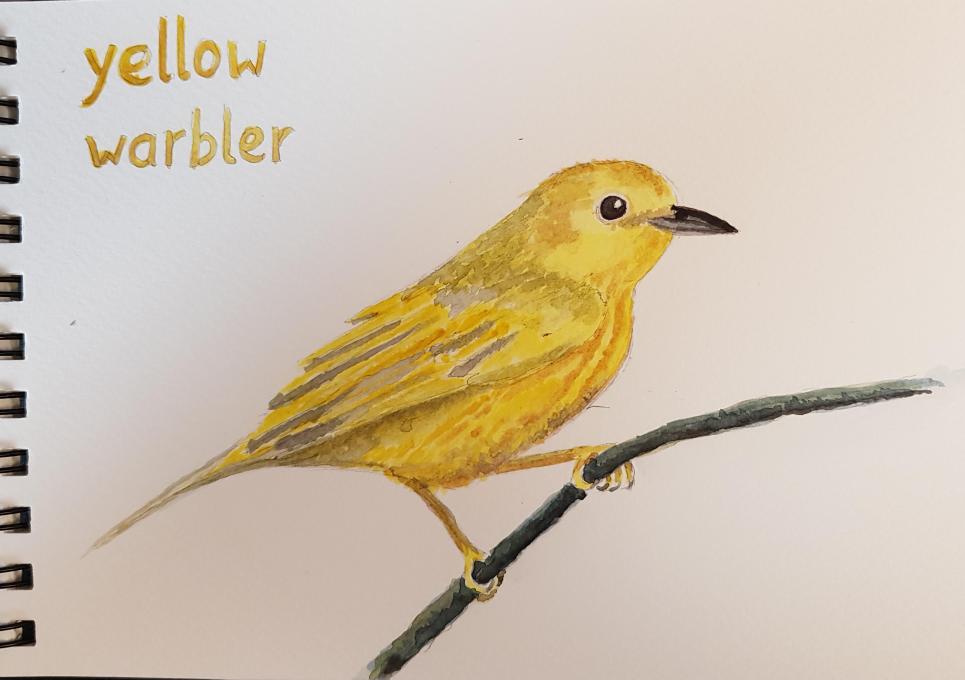
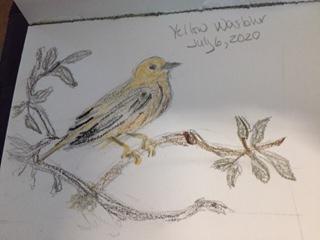 n nature journaling I want to train my eye to notice what is actually there, instead of what I assume might be there.
n nature journaling I want to train my eye to notice what is actually there, instead of what I assume might be there. 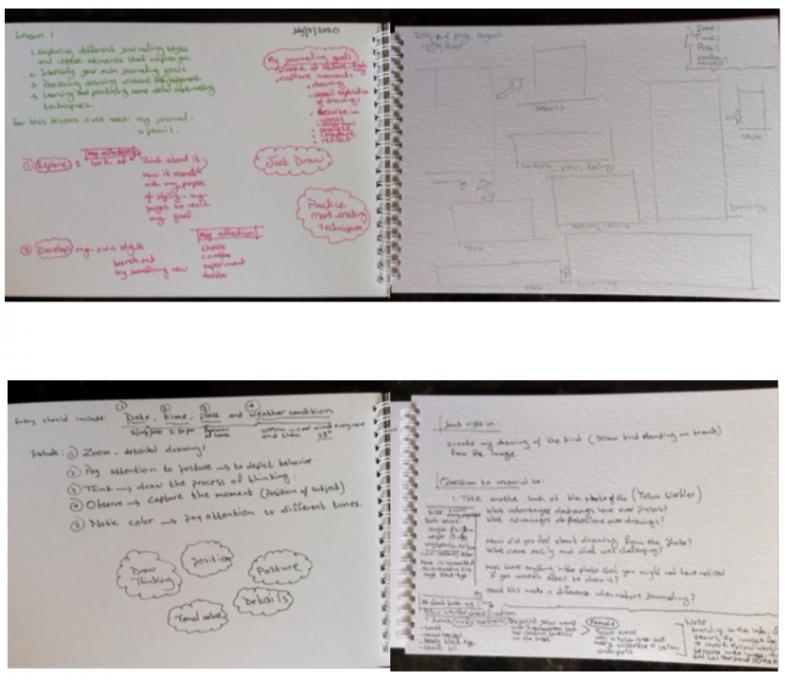
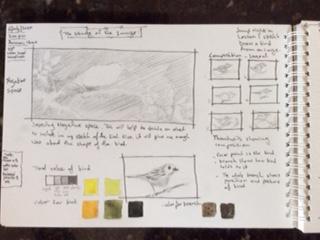
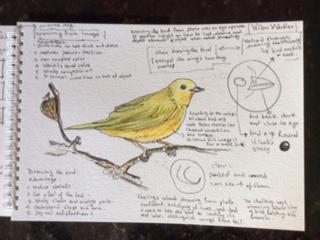
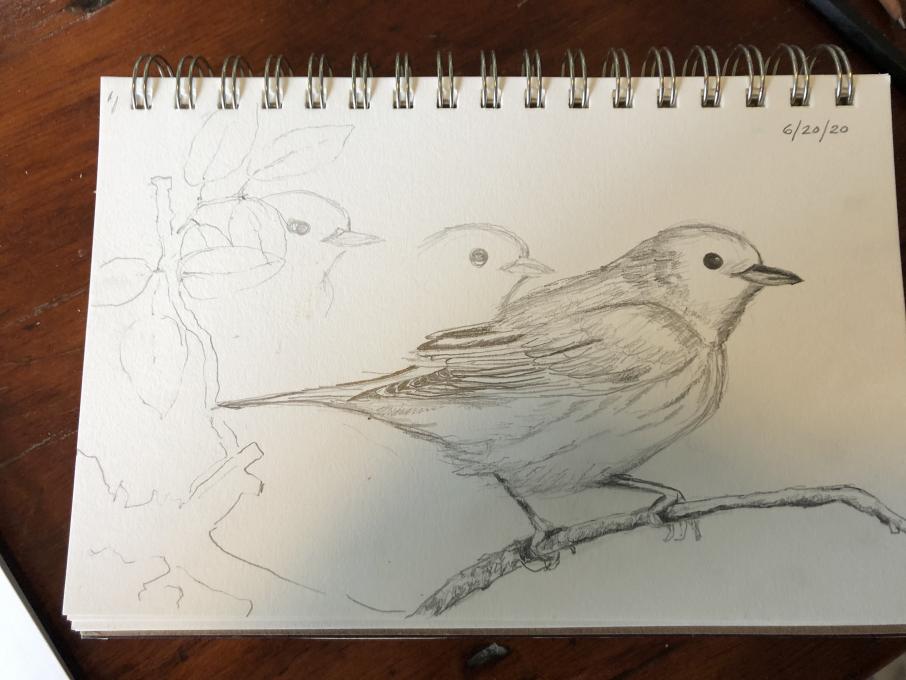
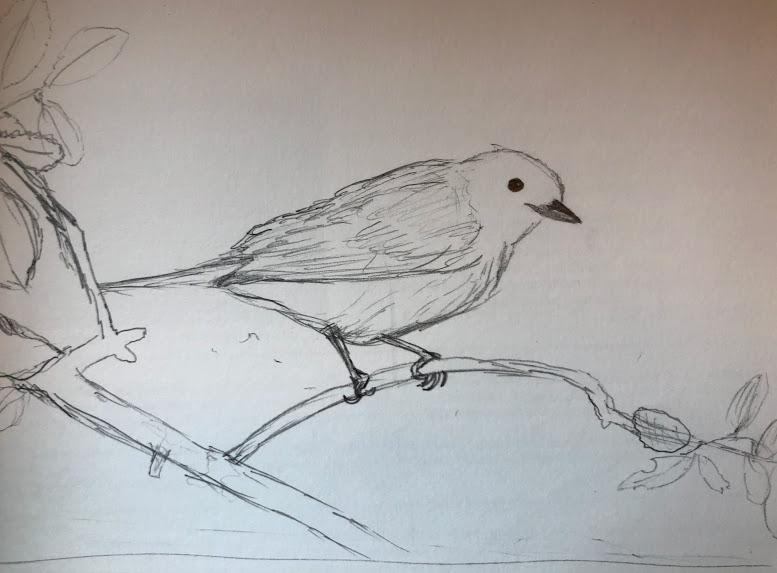 I really enjoyed the entire process because it made me pay close attention to the moss, the shape of the head, the beak. The feet and expression of the bird came easily, whereas the sticks, feathers, and leaves were more challenging--probably because they required some very minute details, and I was more interested in the birds head and feet. All of this would be so useful with field journaling because it is what I pay attention to when it comes to nature--the utility of the claws around the branch, the form of the beak for pecking, etc.
I really enjoyed the entire process because it made me pay close attention to the moss, the shape of the head, the beak. The feet and expression of the bird came easily, whereas the sticks, feathers, and leaves were more challenging--probably because they required some very minute details, and I was more interested in the birds head and feet. All of this would be so useful with field journaling because it is what I pay attention to when it comes to nature--the utility of the claws around the branch, the form of the beak for pecking, etc. 